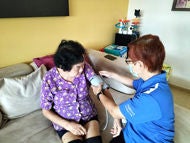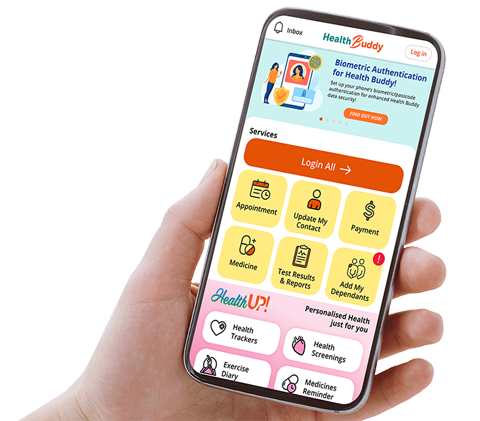What is - Acute Appendicitis
Appendix
This is general information and advice regarding your child's hospital stay and follow-up care. In specific cases, you may receive different / additional instructions from your doctor. You are advised to follow any instructions given to you by your doctor or nurse. Please seek clarification when in doubt.
What Is An Appendix?
The appendix is a 4- to 10-cm long, finger-like structure arising from the caecum which is the first part of the large intestine. The lining of the appendix contains cells which help fight infection. The appendix is normally found in the right lower part of the abdomen and can be removed without detrimental effect.

What Is Appendicitis ?
Appendicitis is an infection of the appendix. In many cases, the cause of the infection is unknown.
Symptoms of Acute Appendicitis
The most common symptoms of appendicitis are:
- Abdominal pain which is initially central and later moves to the right lower part of the abdomen.
- Nausea with or without vomiting.
- Loss of appetite.
- Slight fever.
If the infection of the appendix remains untreated, the appendix may perforate. This may lead to inflammation throughout the abdomen and blood infection, both of which may endanger the child's life.
Frequency
Acute appendicitis can occur in all age groups. It is estimated that it will eventually affect 5 - 7% of the general population. The likelihood of perforation in children is much higher than in adults.
Diagnosis of Acute Appendicitis
When the child is brought to the hospital, the doctor will do a complete physical examination on the child. Blood may be taken for investigation. Occasionally, an ultrasound or a computerised tomography scan (CT scan) may be done to help with the diagnosis, but usually a physical examination is enough. Your child will not be allowed to eat or drink for a few hours. This is to prepare for surgery. Once your child has been diagnosed to have acute appendicitis, an urgent operation will be required.
Treatment for Acute Appendicitis
This operation is done either through a small incision in the right lower abdomen (open appendicectomy) or through three small puncture wounds (laparoscopic surgery). The surgeon will discuss with you the options available.
Pre-Surgery Preparation for Acute Appendicitis
Before Surgery
The surgeon will examine your child and explain the operation. Your child will need to have an empty stomach before the surgery can be done. No food or drinks are allowed for at least 6 hours before surgery as he may vomit during induction of anaesthesia. A drip is inserted for medications and fluids to prevent dehydration. The doctors and nurses will prepare your child for the surgery. The child will be brought on a trolley to the Operating Theatre. A parent/guardian is encouraged to accompany the child to the Operating Theatre. An anaesthetist will give the child medication to ensure he sleeps throughout the operation.
Post-Surgery Care for Acute Appendicitis
After Surgery
Once the surgery is completed, your child will be brought back to the ward. After a day or 2, he will be started on clear liquids and advanced to a regular diet as tolerated. Sitting up, deep breathing and walking are very important exercises after surgery. This may be difficult at first and pain medication is available.
If the appendix had perforated, your child may need to have antibiotics for several more days. You may find that the doctors have inserted tubes into the stomach (through a nostril to empty the stomach), the bladder (to help your child to pass urine), and sometimes a tube (or surgical drain) in the abdomen to let out the infected material. All these are temporary and will be removed as soon as your child is better. If he experiences very severe pain in the abdomen, let the doctors and nurses know. Pain medication is available, and is usually given via a continuous drip after operation.
Going Home
The recovery from surgery is usually fast and the child is often home in 2 - 3 days after surgery. If the appendix had perforated, he may need to stay longer e.g. 7 - 10 days for further treatment. Once the doctor has confirmed that your child can go home, you will receive the following:
- Medication for pain relief.
- A follow-up appointment to see your surgeon at Specialist Outpatient Clinic K in 2 weeks' time, for review.
- Medical leave.
- Exemption from physical education (PE) for 4 weeks.
Important Information
- Keep the wound dressing clean and dry. You may remove the adhesive dressing 1 week after discharge.
- Seek medical advice if there is fever, redness or discharge from the wound, or if your child has other complaints in the abdomen.
- There is no diet restriction. A well balanced diet is recommended.
Have a pleasant stay in Hospital!
Contributed by
The information provided is not intended as medical advice. Terms of use. Information provided by SingHealth.
Get to know our doctors at SingHealth Hospitals in Singapore.
Get to know our doctors at SingHealth Hospitals in Singapore. here.




















